Why Should We Care What Epoxy Adheres To?
Learning what epoxy resin sticks to and what epoxy resin does not stick to is crucial knowledge for professional resin artists and amateurs alike. Epoxy resin is an extremely versatile medium and the possibilities for creativity are endless when using the medium.
Knowledge of which surfaces epoxy resin sticks to opens the different canvas possibilities for your resin artwork. However, if you pour on the wrong material, one that epoxy does not stick to, your epoxy resin will most likely peel off once it has cured.
On the other hand, equipped with the knowledge of what epoxy resin does not stick to, you can make amazingly creative molds, learn how to protect your workspace, and even save the environment! Don’t worry, this will all make sense below.
How Can Learning What Epoxy Sticks To Benefit Me As An Artist?
This is almost self-explanatory, but you need to understand what epoxy resin sticks to in order to pick the proper canvases for your epoxy resin projects. It may seem straightforward if you are only trying to create a painting, but epoxy resin art is so much more than just one type of art!
People make collages, tables, and more, adding all sorts of organic and inorganic items to the epoxy resin. Without the knowledge that epoxy resin will stick to these objects, you could end up spending a lot of time on projects that just do not end up working in the end.
How Can Learning What Epoxy Resin Does Not Stick To Benefit Me As An Artist?
Have you ever wondered how artists make amazing pendants and serving trays out of epoxy resin without using a silicone mold? It almost seems like magic!
Some make beautiful coasters with rock-like edges, gilded in beautiful metallic.
Other artists make gorgeous wood and epoxy pieces, like nightlights and even dining room tables.
Some of these more unique projects are created without using a silicone mold.
Some resin artists want to make bigger projects, like dining room tables or large plaques, and it is hard to find a silicone mold big enough to use as a mold for the project.
Other times, it can be hard to find a silicone mold with the exact shape or details an epoxy resin artist is trying to achieve. In situations like these, an epoxy artist is forced to get creative.
In these situations, having an understanding of which surfaces epoxy resin does not adhere (stick) to gives an artist wonderful creative freedom.
Daily, epoxy resin artists are creating new ways to use these surfaces in their projects. So, remember to get creative with it. Once you have a little understanding of the materials that epoxy resin does not stick to, you too can become a resin mold-making master!
Other ways this knowledge can come in handy are workspace protection and even for use as recycled art supplies!
What To Do If I Can Not Find The Correct Mold For My Resin Art Project?
When faced with a project for which an artist can not simply purchase a silicone mold, the resin artist has two options:
Option One: She gives up!
After all, making my own mold must be difficult! (This is where many give up creating the idea in their head.)
Ha, that’s a good one! Let’s hear option two.
Option Two: She creates her own mold to suit her resin project needs!
Ding Ding Ding! We have a winner.
Option two is one I can get behind. Mostly because I have done this more times than I can count. Yes, at first, making custom resin molds was a time-sucking, dreadful task, but I have learned many tricks through trial and error. So you, my friend, get to benefit from my mistakes.
Benefits of Making Your Own Mold
Don’t get me wrong, many of the molds on the market today are great, but I find tons of people end up making the same projects over and over again with these stock molds. After reading this article you should feel confident enough to make your own resin art molds for whatever project you have imagined in that pretty little head of yours.
You are welcome.
Another great benefit of using many of these surfaces for molds is that they can be used repeatedly and the sizes adjusted so you can get really creative with your projects.
How to protect your workspace from epoxy resin damage
Resin art table protection
It can also be really handy to know which surfaces epoxy resin does not stick to when you are considering how to protect your workspace and floor. Epoxy resin can damage clothing, workspaces, and floors if you do not protect them adequately. For extra protection, I cover my worktop with contact paper and a silicone mat before starting a project. This is usually adequate for smaller projects like resin coasters or resin jewelry. For bigger projects, you want to protect your worktop as well as your floor, which is discussed below.
Resin Art Floor Protection
As far as the floor goes, laying a plastic drop cloth or purchasing a big silicone mat works well to protect your surface.
When doing larger resin art, such as paintings on large canvases, or larger sculpture resin art, epoxy resin can drip from the worktop to the floor very easily. In fact, you may not even see it happening until it is too late.
Using a plastic or silicone dropcloth or mat is the best option for resin art projects because both can be used over and over again.
This is because epoxy resin does not stick to plastic or silicone. As a result, you can do a project, wait for the epoxy resin to dry on the surface, then peel it right off and you have a fresh mat/sheet to use again and again.
Obviously, the higher the quality of the material, the more times you will be able to use it as protection from resin art spills.
Here are my two recommendations for a large drop cloth and a large silicone mat:
Reusable Resin Art Supplies
You may be surprised how many surfaces epoxy resin does not stick to. This is especially handy for artists who want to make creative and unique molds. This is also beneficial for resin artists looking to save money on supplies used to protect workspaces and prepare epoxy resin for resin art projects.
Resin Art Supplies that Resin Does Not Stick To
When picking which containers to mix your epoxy resin in and which mixing utensils to use, you can apply the knowledge in this article to purchase products that can be used repeatedly as well. For example, I always have silicone spoons and stir sticks available in my resin art area. They are super easy to clean once the resin dries and you avoid having to buy new supplies every time you would like to do a project! Here are some of my favorite reusable resin art supplies. It is just an added bonus that all of these supplies are so affordable!
resin Art Supplies You Want Resin to Stick To
Inversely, epoxy resin will stick to many surfaces, making it an ideal medium for many types of artwork. Epoxy resin will stick to most surfaces that are porous, including wood, polymer clay, aluminum, cast iron, bricks, concrete, fiberglass, ceramic, marble, and organic materials like flowers and leaves. Importantly, wood and aluminum must be sanded first to ensure proper adhesion of epoxy resin.
Taking advantage of this, you can make some beautiful creations like wood and epoxy pendants or jewelry made from epoxy resin and aluminum bezels. For example check out these real rose petal resin earrings and an epoxy and wood lazy Susan, both available in the Craftelot Resin shop:
Available Now! |

|
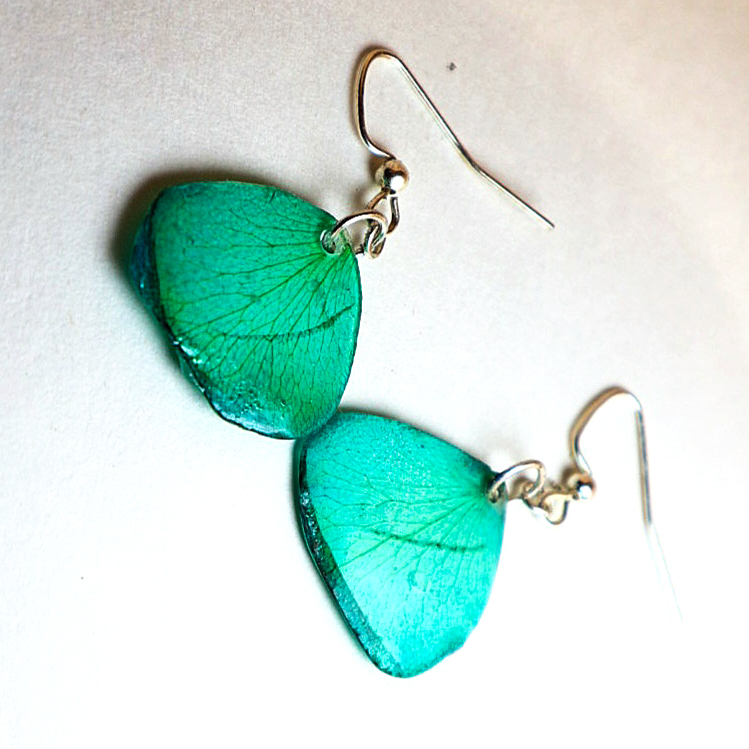
|
|---|---|---|
|
Title
|
Wooden Lazy Susan with Turquois Inlay | Fresh as Rose Petal Earrings |
|
Price
|
|
$39.99 |
|
Add to cart
|
Add to cart | Add to cart |
|
Price
|
$39.99 |
What Epoxy Does Stick To-Quick Reference
Read below for detailed information on how these materials can be used as resin art molds, protective surfaces, and more!
Epoxy resin sticks to most surfaces that are porous, as well as most metal surfaces. materials with porous surfaces provide a bit of a tooth for the epoxy resin to adhere to, making them ideal for epoxy resin art. Metals, although nonporous, also stick to epoxy resin well. This is because epoxy resin creates a strong bond to the metal if cured correctly.
- Wood
- Steel
- Cast Iron
- Aluminum
- Stone
- Shells
- Concrete
- Bricks
- Cured Epoxy (Sanded)
- Ceramic (Sanded)
- Fiber Glass (Sanded)
- Unpolished Marble
Scroll down for more information on each of the materials epoxy resin sticks to.
What Epoxy Does Not Stick To: Quick Reference
For quick reference, here is a list of surfaces epoxy resin will not stick to:
- Polyethylene plastics
- Wax or parchment paper
- Plastic Containers/ Tupperware
- Silicone
- Vinyl
- Rubber
- Polypropylene Plastic
- Hot glue
- Cellophane
- Painters Tape
- Packing Tape (nonstick side)
- Plastic Paint Sheeting
- Waxy or oily Surfaces
For more information on each of these materials, expand each of the sections below.
Materials Epoxy Sticks to - More Information
Generally, epoxy resin will stick to materials that are porous, as they provide more surface area for the epoxy resin to stick to. However, some materials, particularly metals, adhere well to epoxy resin. In fact, epoxy resin is used in many industrial applications to glue metals that need to stick together indefinitely. The curing process, when done correctly, allows the epoxy resin to adhere to these nonporous surfaces. For ease of reference, I have listed the materials epoxy resin does adhere to below and, if you expand each section, you can learn a bit about why epoxy resin sticks to each.
Yes, epoxy resin does stick to wood, quite well actually. If you are thinking of making a wood and epoxy project you should be sure to seal your wood first. If you fail to seal the wood before pouring epoxy on it, the resin will seep into all the cracks in the wood to the table underneath. If you seal the wood with a primer first, you will not have this issue.
Note: Epoxy resin will not stick to wood that has been treated and is glossy or smooth on top. The epoxy will lift off this type of treated wood.
Wood looks great in many epoxy resin projects and there are some great resin art project ideas using wood. Here is one of our wood and epoxy products available in the Craftelot Store now: (Click the photo to see product details.)
Steel is one of those nonporous materials that epoxy resin sticks to. However, it is prudent to sand the steel before applying the epoxy resin. This provides a tooth (more surface area) for the epoxy to bond to. If you do not sand the steel, you may see the epoxy resin peel away from the steel, which is frustrating.
Aluminum is another surface that epoxy bonds rather well with. Some say it is necessary to sand the aluminum beforehand, but I have had no issues using unsanded aluminum foil in my epoxy projects.
In fact, aluminum foil is one of the materials I use in some of my most popular wall art pieces.
Here is one item available in the shop: Click the picture to visit the product page.
Concrete is porous and bonds well with epoxy. Even though it is porous, I suggest sanding down the material a bit to ensure maximum adherence with the epoxy resin.
You can make some pretty interesting coasters using epoxy and resin and I have seen some beautiful Kintsugi-style plates made of broken concrete put back together with thin lines of gold-colored epoxy resin.
Yes, epoxy will stick to cured epoxy resin. However, most people recommend sanding down cured epoxy resin before applying another layer of epoxy resin to ensure maximum adhesion.
Like other smooth, nonporous surfaces, the cured epoxy resin may separate from an added layer of epoxy resin without sanding.
Note: I have been lucky not to sand some of my pieces before adding another layer, but there is no guarantee this will work every time. Lightly sand the cured epoxy layer and you will be ready to apply another layer. Oh, and do not worry, once you add the second layer of epoxy resin, the scuff marks from the sanding will be erased. Promise, you will not ruin your piece.
Yes, epoxy resin sticks to partially cured epoxy resin. This is the best way to put a second coat of epoxy resin onto your artwork. You do not need to do any sanding, as long as the epoxy has not cured yet. I would not wait any longer than 3/4ths of the total cure time before adding another layer of epoxy resin tho. If you wait too long, you will need to wait until the first layer has cured completely, sand it down, then add your second layer of epoxy resin.
Cast iron has a lot of surface irregularities, making it a great material to bond with epoxy resin. Be sure to clean your cast iron very well before adding it to a casting, however. Any residue or oils left on the cast iron could cause the epoxy resin to separate from the object.
Tip: Boil your cast iron in water to remove any residue that may be on the surface before casting in epoxy resin.
Stones with porous surfaces stick well to epoxy resin. Many artists use these in stone and flower castings. If you have a really smooth stone, you can sand it a bit to ensure maximum adhesion to the epoxy resin. Remember to clean the stone before pouring resin on it to remove any debris that may still be on the stone.
Yes, epoxy resin does stick to shells. In fact, many artists use shells in their ocean paintings and ocean tables/dioramas. Shells, like most stones, have a porous surface that bonds sticks well with epoxy resin.
Like concrete, brick also bonds well with epoxy resin. Be sure to sand the brick a bit. Using a wire brush works well to remove any of the loose brick material on the top. If you do not do this you may see your resin separate from your brick as the loose material eventually falls off of the brick. Get the loose material off and you are good to go! Your epoxy resin will stick perfectly well.
Ceramics are usually coated with a glossy finish. This takes away the porous nature of ceramic.
If you are trying to bond epoxy resin with a glossy piece of ceramic, sand the ceramic first to ensure proper adhesion.
If you have a raw piece of ceramic that has not been treated with any type of surface gloss, the epoxy resin will bond automatically with the ceramic.
Fiberglass tends to bond well with epoxy resin when sanded. Make sure to sand the fiberglass well and wipe it down before pouring your epoxy resin.
Like most of the other materials on this list, marble can be pretty smooth. With good sanding and a diligent wipe-down, you should have no problem binding to marble.
Materials Epoxy DOES NOT Stick to - More Information
Polyethylene Plastics
Polyethylene plastics, or HDPE plastics, are used frequently when creating a mold for resin and wood tables or even smaller epoxy pieces, like a rose encased in a square of epoxy resin. The ability to make any size mold you want with polyethylene plastic makes this material one of the most widely used for epoxy resin art. Conveniently, polyethylene or HDPE plastic molds are reusable and very durable. This is a high-quality plastic that actually will outlast your silicone resin art molds in most circumstances.
Most frequently you will see these molds being used for river tables or geode tables. It can also be used to make cutting boards or smaller furniture items. Plaques and wall art can also be made using these molds. Usually, professionals use HDPE polyethylene plastic as molds for objects with angles, however, it is possible to get flexible polyethylene sheeting if you are trying to make a round table or another type of rounded resin art piece.
The downside to using these plastics is they can get expensive if you are attempting a bigger project, however, I have found that they are cheaper than buying a large silicone mold. It Using polyethylene plastic also requires some ingenuity if it is being used for a resin art mold as you will have to construct your mold from different sheets of plastic. Importantly, you want to make sure epoxy resin cannot seep through the areas you have joined your plastic together. For example, the corners or where the plastic meets the bottom of your mold. A great tip is to run a bead of silicone glue across the areas you have joined the plastic together. As you will learn below, epoxy does not adhere to silicone either. Smooth the silicone glue bead down with a gloved finger and you will be all set!
Notable, there is another type of thinner polyethylene sheeting you can use as a surface to pour epoxy resin on so you can peel the epoxy off once it is cured. It is much more flexible than the thicker HDPE (high-density polyethylene plastic) boards discussed above. The flexibility of the thinner polyethylene plastic makes it hard to use as a solid mold.
If you are looking to purchase HDPE or thinner polyethylene plastics, I recommend the following products:
Polyethylene Sheets: Buy Here
Plastic is a great material to use with epoxy resin and epoxy resin does not stick to it. This is also a cheaper option than buying silicone containers. (However, if you are going to do more than a couple of projects with epoxy resin, it ends up being more economical to buy silicone containers, as they are more durable than plastic cups.)
Plastic Containers/ Tupperware
A great feature of using a plastic container as a mold is the ease of removing a cured resin project when you are finished. However, it is smart to spray the container with a mold release agent before pouring your epoxy resin into the container. This ensures you an easy time removing your cured resin object from the plastic mold. Tupperware works great as a mold for encasing objects in epoxy resin. Here is an example of the type of project I am talking about:
A drawback of using plastic containers is that it is not easy to find large plastic containers readily available around the house., so this may not be the best option for larger resin pours, like tables or serving trays. However, you can purchase thick plastic sheets to make your own molds. You can cut the sheets to size, and glue them together to prevent the seeping of any of your resin, and you have a great, reusable, custom mold.
Another great way to use plastic containers for epoxy resin art is for use as mixing cups. They are great for mixing your epoxy and hardener together, as well as mixing pigments into your epoxy resin.
Tip: Experiment with different-sized Tupperware containers to make something you love out of epoxy resin!
My favorite thing about using plastic cups for this purpose is that, when I have finished my project, I can just leave the cups out until the epoxy resin has cured. (Do not try to remove uncured resin from plastic cups. It is a nightmare to get out and I would not wish the task on my worst enemy. )
Do, however, let the epoxy dry with a popsicle stick stuck into the cup. Then, after the epoxy resin has cured, you can pull on the stick, and the resin pops out of the container, like a little resin remnant popsicle!
Plastic Utensils
As far as plastic utensils go, the same principles apply. If you use plastic utensils to mix your epoxy resin, you will be able to peel the resin off the utensils once it has cured! Here are my suggestions for reusable plastic supplies to use for your epoxy resin projects:
Silicone
Silicone is one of the most popular materials used in epoxy resin art. It can be used as a mold, a protective surface, and even for preparing your epoxy resin and pigments. Silicone is popular because it is so easy to remove epoxy resin from the surface after the epoxy resin has cured.
Some really awesome molds for epoxy resin art are made using silicone. In fact, we have compiled a list of the 32 Best Silicone Molds for Resin Art on the market today. Keep checking out our blog to see updated lists of some of the coolest and most useful silicone molds for epoxy resin art on the market today.
Another great feature of silicone is that it is affordable. If you are trying to make a cast (or duplicate) of an item, you can purchase two-part silicone mold-making kits. These kits are fantastic if you are not able to find a ready-made silicone mold on the market for your resin project. They are easy to use and, once you make your mold, it can be used over and over.
Here is the 2 part silicone mold kit for resin art that I recommend:
Buy Let’s Resin 2 Part Silicone Mold Making Kit Here
Silicone’s ability to preserve the details of the original casted object makes it one of the most ideal materials for epoxy resin molds. If you are trying to cast a piece that is very detailed, silicone is your best option.
Aside from silicone, vinyl also does not bond to epoxy resin.
Many crafters like to use epoxy resin to seal vinyl stickers onto surfaces, including tumblers or wood planks. This works because the epoxy resin is able to adhere to the surface area around the vinyl sticker. This is seen when crafters add epoxy resin to a tumbler with vinyl stickers or when vinyl letters are put on a wood plank and coated with epoxy resin to make a sign.
However, epoxy resin does not stick to the vinyl itself. For example, if you had a plain sheet of vinyl and poured epoxy resin over it, the resin would start to lift after it had cured. This lack of ability to be bonded with epoxy resin is due to vinyl’s nonporous and slick surface.
I have seen some crafters have luck getting resin to stick to vinyl by coating the vinyl with a primer before pouring the epoxy resin onto it. The primer creates a bit of a porous surface, allowing the epoxy resin to bond or stick to the vinyl. However, this is not a recommended strategy because, once the primer starts to lift from the vinyl, the epoxy resin will obviously peel off with it.
Typically, vinyl is not a material I would recommend using to protect work surfaces from epoxy resin or for lining homemade epoxy resin molds. After all, it is not the cheapest material to purchase in bulk. A great alternative to vinyl for protecting a work surface from epoxy resin is contact paper. it is cheap and easy to dispose of during clean up. However, I use contact paper frequently over my epoxy resin workspaces, which is the same idea as using vinyl, however much cheaper.
Here is the contact paper I use to protect my workspace from resin spills:
Rubber
Rubber is another material that epoxy resin does not stick well to. Like the other materials on this list, rubber is nonporous so it cannot form a bond with the epoxy resin. Also, rubber tends to be flexible. So, if you pour resin on it, after the cure, it will lift easily and as soon as the rubber flexes in the opposite direction of the cured epoxy, separation will occur.
Polypropylene Plastic
Resin does not stick to polypropylene plastic. Polypropylene is commonly used to make bottles that hold solvents and other chemicals. However, it can also be recycled to produce other useful items such as food containers. As discussed above, epoxy resin does not stick to materials that have nonporous surfaces, like polypropylene plastic. This makes containers or sheeting made from polypropylene plastic handy for resin art projects.
However, I suggest using a mold release before pouring your resin into a container made from polypropylene plastic. For some reason, without a mold release, it can be difficult to separate the cured epoxy resin from polypropylene plastic. This is not because they bond to each other though. I suspect it has something to do with the temperature that epoxy resin reaches while curing. The high temperature may cause the plastic to warp a bit, making it hard to pull the two apart. Rest assured, they will come apart eventually, but you may end up breaking the mold or your art piece trying to separate the two. Mold release prevents these types of demolding disasters.
Mold Release I recommend:
Mold Release for Resin Art: Buy Here
Hot glue, hot glue. I love you! No, seriously tho. Hot glue has saved me from so many would-be resin art catastrophes!
Hot glue has three properties that make it especially handy for resin artists. They are as follows:
1. Hot glue does not stick to epoxy resin. (This is the most obvious!)
2. Hot glue dries rather quickly.
3. Hot glue can get in very small spaces.
So, I have seen a YouTube video of artists making resin molds out of hot glue. They were very small molds and they seemed to work okay. However, I do not recommend using hot glue in this manner for resin art. It is not strong enough and you would need a lot to make anything bigger than a pendant.
Hot glue becomes a very handy material for resin artists who make homemade molds using other materials that resin does not stick to. For example, when I make a big mold out of melamine board or plastic sheeting, I will use hot glue or silicone glue to seal up the cracks where the different sides of the mold attach to each other. This prevents any epoxy resin from seeping out of the tiny spaces between the edges and corners of these molds.
If you are short on time, use hot glue instead of silicone glue to seal molds because it dries much quicker. Storytime!
Once upon a time, I poured epoxy resin into a mold I thought I had sealed correctly and within 60 seconds realized disaster had struck.
The resin was leaking, and worst of all, I could not tell where the hell it was coming from.
Quickly, I grabbed my trusty hot glue gun and ran a bead over each area that could have been causing the problem.
It was a messy process, but it saved the day. The hot glue dried and sealed the hole.
Although I lost some resin during the process, I saved much more by thinking quickly in this situation and having that hot glue gun fired up and ready to go in case of emergencies.
Situations like these are bound to happen to any resin artist and hot glue is a formidable opponent to leaking epoxy resin. Its ability to dry quickly and get into small places makes it the ideal material for sealing any crack in homemade epoxy resin mold.
I recommend having a quality cordless hot glue gun on hand, like this one:
Cordless Hot Glue Gun for Resin Art: Buy Here
Cellophane, or plastic wrap, is another material that epoxy resin will not stick to. It is a plastic, so that makes sense.
A great way to use cellophane is for making coasters with a texturized look. Some call these velvet resin coasters.
To achieve this look, pour a layer of colored resin into a silicone mold. Place a sheet of cellophane over the uncured resin on the surface and lightly push areas of it into the resin. This will create a wavy type pattern.
Once the resin has cured, peel the cellophane off.
Lastly, add a layer of clear resin to the top of the first layer and you will get a neat velvet effect.
Use metallic pigments to color the first layer for an awesome effect.
You should achieve a look like this:

Painters tape is another material that does not stick to epoxy resin.
Use painter’s tape to protect the borders of your canvases from resin overspill.
Another way to use painter’s tape is for making open bezel resin jewelry. Stick a piece of painter’s tape on the back of the bezel and pour your resin in.
After your projects have cured, you will be able to pull the painter’s tape off, leaving you with a smooth edge around your canvas and a glossy back to your open bezel jewelry.
Tip: If you are struggling to peel the painter’s tape off of your canvas or jewelry pendant, heat the tape up carefully with a heat gun or hair dryer. Once the sticky tape heats up, it will peel away easily from the resin.
At this point, it should be obvious that epoxy resin does not stick to plastics. Packing tape is made of plastic, so no surprise it does not adhere to epoxy resin.
However, you may have trouble separating epoxy resin from the sticky side of packing tape. I suggest testing painters tape, packing tape., and aluminum tape to see which works best for your resin art needs.
Here is another material made of plastic that does not stick to epoxy resin. If I am doing an extra large resin painting and/or working over a floor I need to be extra careful not to get epoxy on, I use plastic paint sheeting.
Use the plastic sheeting as a drop cloth, covering as much of the floor as necessary, and you avoid ruining your workspace floor with sticky epoxy.
Plastic paint sheeting is a cheap, effective product for protecting your art room table or floor. Tape the edges of the plastic sheeting down so it does not move around and you are good to go!
Plastic Paint Sheeting: Buy Here
This is kind of a catch-all category because it would be difficult to name all the waxy materials in the world that epoxy resin does not stick to. However, if you know that a surface is waxy or oily, you should assume it may not stick to epoxy resin. This should save you from having to remake a project in the future!
Wax and Parchment Paper are other materials that epoxy resin does not stick to. Be sure to use the waxy side face up. In other words, the resin should only be applied to the waxy surface to avoid adhesion. These materials are extra useful for making small items, like jewelry pendants or even UV resin pieces.
However, with larger epoxy resin projects, I have had issues separating the resin from wax paper. Most likely this was due to the fact that I sandwiched the wax paper with my epoxy resin somehow and it was hard to pull out when both sides were coated with cured resin.
Wax paper and parchment paper are great tools for those of you trying to make simpler objects or if it is the only thing you have in the house to use as protection for your workspace. Not to mention, it is one of the cheapest materials on this list!
Wax or Parchment Paper
Epoxy Resin does not stick to wax or parchment paper, making the surface ideal for protecting work surfaces or for catching epoxy resin that has dripped over a painting or jewelry finding. (Note: Some brands of wax paper have given me issues, as they were harder to peel my epoxy resin off of.)
Unfortunately, because wax and parchment paper is flimsy, it is not the best material to make molds from. Another drawback is that if you try to use it as a backing to pour the epoxy resin into open jewelry bezels, the side of the piece that peels off of the wax paper will be matte in finish, not shiny like the side that was not touching to wax paper.
Ultimately, save yourself the headache if you can and use another option on this list. However, this is a convenient material to use if you already have it laying around the house, as most of us do! It is also affordable. For a novice or someone on a budget, this is a great material for resin art projects.
Parchment Paper for Resin Art: Buy Here
Frequently Asked Questions
Can I use Epoxy Resin On Outdoor Surfaces?
Epoxy Resin can definitely be used on outdoor surfaces. In fact, many boats and backyard decks are coated with epoxy resin.
There are a few things you want to watch out for when picking an epoxy resin to use on outdoor surfaces.
Most importantly, you want a strong, waterproof formula that is designed for use outdoors. Of equal importance is choosing an epoxy resin that has both UV filters and HALS protection. Epoxy resins have the nasty habit of yellowing after exposure to UV rays (aka sunlight). To prevent yellowing you want to choose an epoxy resin formulated with the latest and greatest UV protection technologies. (Hence, UV filters and HALS)
My recommendation for an epoxy resin to use on outdoor surfaces is the following:
Total Boat is a tried and proven, heavy-duty epoxy resin that stands the test of weather, sun, and time.
How to Remove Cured Epoxy?
This is a situation no artist wants to find themselves in. Removing cured epoxy is never fun. However, it will happen to everyone eventually. Lucky for you, I have had to remove cured epoxy from pretty much anything you can think of, including, hair, clothes, paintings, floors, and more! I will share how I removed the cured epoxy from each of these objects, or if it was even possible.
How to Remove Cured Epoxy From Hair?
Ok, this one is scary, I know. It is best to catch the epoxy before it has cured, but this is not always realistic, I can not tell you the amount of time I have put my hair in a ponytail, thinking I was safe from the epoxy, only to wake up the next morning with the top of my ponytail stuck together. Somehow my hair likes to take a dip in my epoxy projects.
Anyway, if you catch it before it cures, wash the area with dish soap. If that does not get it out, try rubbing alcohol and add some sugar to it. This should help mitigate the effect once it starts to cure a bit.
Once it cures, you are pretty much SOL. I have lost a few inches of hair this way. But hey, I probably needed a trim anyway!
Pro Tip: Wear a tight bun when working with epoxy resin and be cognizant not to touch your hair while working. A hair net would help, and a swim cap would be even better! I’ll have to model that look in my next YouTube tutorial. What do you think?
How to Get Cured Epoxy off of Canvas?
This is another difficult task. However, it is possible to use a heat gun to heat up the resin that has cured. Once it starts to melt, you can scrape the epoxy off with a scraper. be very careful though because the epoxy is very hot once it reached the temperature required for melting.
The best way to deal with a cured epoxy painting you do not like is to sand the first layer down and cover it with another layer of epoxy. Pray that you like the second layer better.
How to Get Cured Epoxy Resin off of the floor?
Once again, do not wait until the epoxy resin has cured, if possible. However, some floors, like smooth laminate or vinyl will not stick to epoxy resin. Therefore, you can just peel the cured epoxy resin right off. Be very careful not to rip the vinyl when peeling.
Carpet, on the other hand, is not quite as forgiving. The only remedy is to snip the cured epoxy resin off with some scissors and pray your carpet haircutting skills are decent.
How to Get Cured Epoxy Off of Clothes?
Here is another hard one. It is damn near impossible to get cured epoxy resin out of clothing., Try to catch it before it cures and use dish soap to dab the area. You can try to add some sugar to the soap to give a little bit more of a rough scrub to the garment.
However, once it has cured, you are pretty much SOL.
You could try the ‘worn look.’ You know, like ripped jeans. Cut the cured epoxy right out of the clothing. Who knows, shits with holes may be the best big thing!
Pro Tip: Wear an apron for any epoxy resin project.
How to Remove UnCured Epoxy?
How to Remove Uncured Epoxy From Clothing and Hair
As discussed above, removing uncured epoxy is easier than removing cured epoxy, However, it is not guaranteed to be successful. Use dish soap, alcohol, and sugar to scrub the item that has uncured epoxy on it. Pray that you have gotten enough off to not ruin the item.
How to Remove Uncured Epoxy From Canvases and Countertops
As far as removing uncured epoxy from countertops or canvases, just scrape the resin off the canvas or countertop and into a cup or mold if you are trying to conserve your epoxy resin. Then wipe your surface with alcohol. It is a messy job, but someone has to do it sometimes.
Once, I poured an entire epoxy countertop project and realized the company has sent me two Epoxy Part A’s and no Part B. So, foolish as I am, I did not check and completed the project. Needless to say, the next morning when the countertops were still dripping wet, I had to dig deep to keep a smile on my face. Anyway, it took time, but I was able to remove all the uncured epoxy and start over once I was sent the correct formula.
How to Remove Epoxy Resin From Skin?
Always wear gloves and long sleeves when working with epoxy resin. For information about the health effects caused by skin exposure to epoxy resin, please read Is Epoxy Resin Hazardous to Your Health?
I you do end up with epoxy resin on your skin, rinse it off immediately. try using dish soap. If that does not work, add some sugar to the soap to make it more abrasive. Scrub until the epoxy resin has come off. Some of my favorite, most effective wipes to have on hand are the following:
Every resin artist should have a box of these handy. They work wonders and save a ton of frustration.
What is Mold Release?
Mold release is an oily spray that can be sprayed on your mold before pouring your epoxy resin. The mold release makes it much easier to slip out your casting during the demolding process.
Do I need To Use Mold Release for My Resin Art Projects?
Mold release is a very handy substance to have on hand if you are making any sort of casting in a mold. This is especially important when using homemade molds because they tend to be a little harder to get your castings out of.
When using silicone molds, it is not necessary to use a mold release, however, it will extend the life of your mold if you do choose to use it. It is way easier to demold an object from any mold that has been coated with mold release so save yourself the headache and pick some up. Here is my recommendation:
In Conclusion..
I hope we were able to answer your questions today. If you have read this whole article, you are well on your way to becoming a resin art goddess! If you have any further questions, do not hesitate to leave them in the comments below…or you can just say hi!
xoAsh

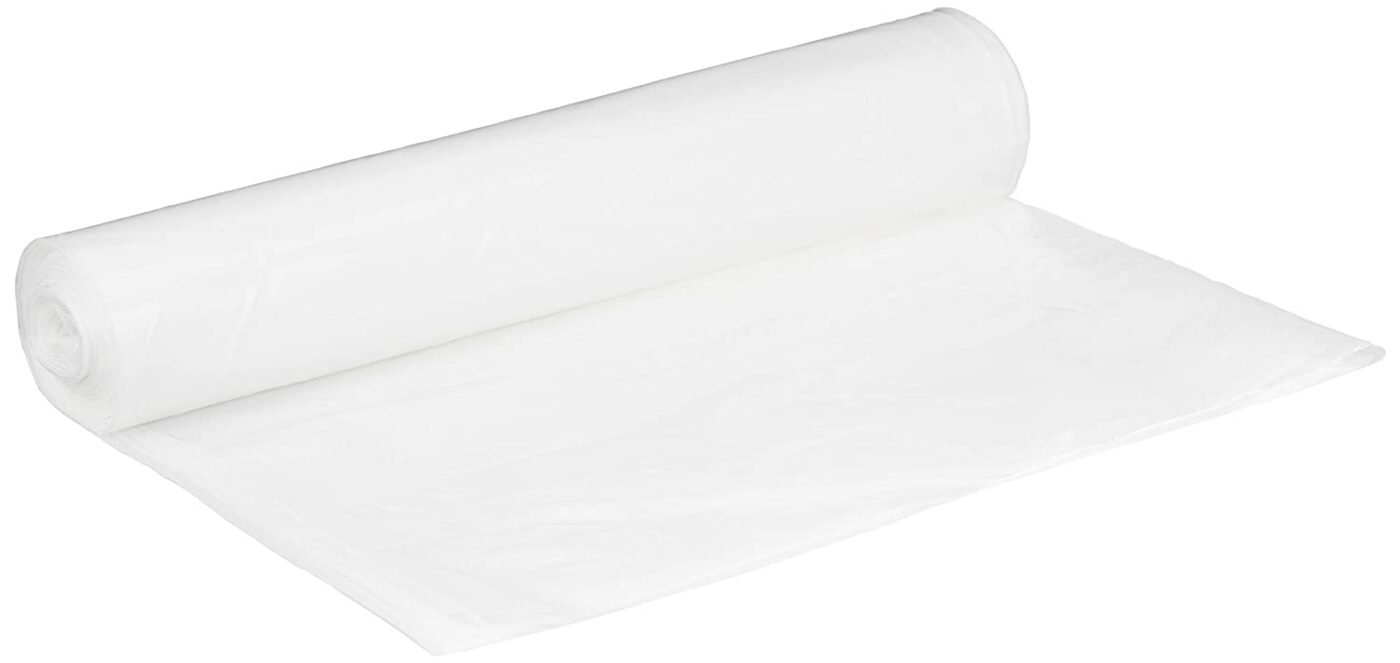
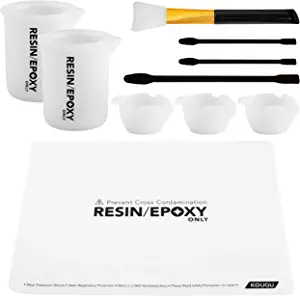

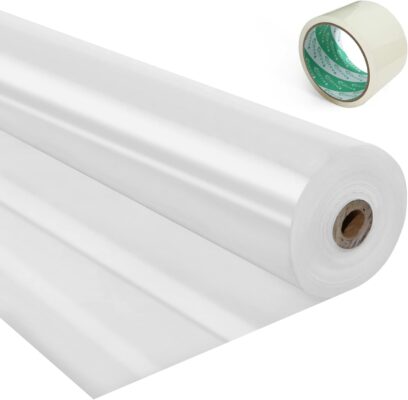
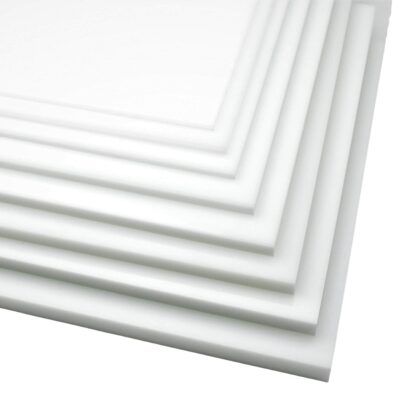
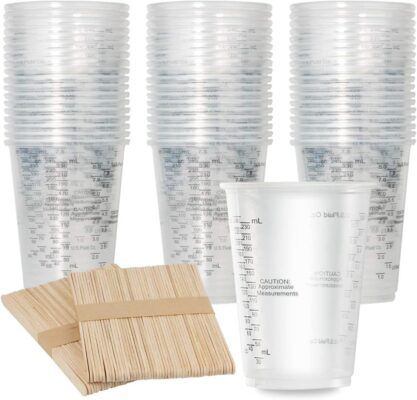

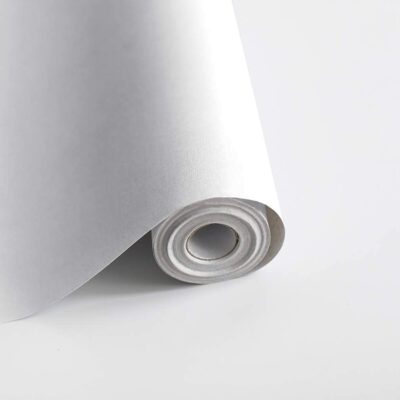

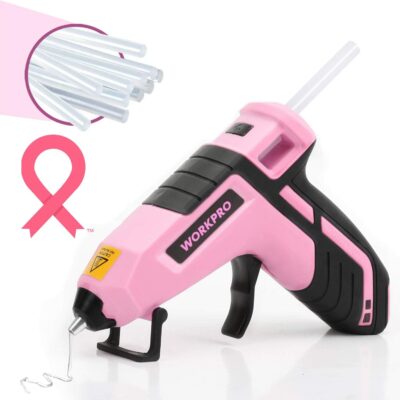
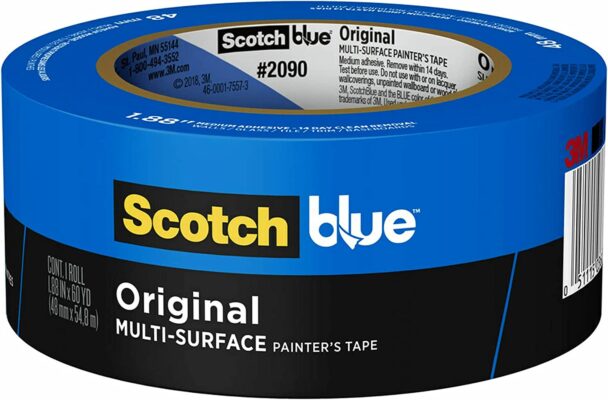
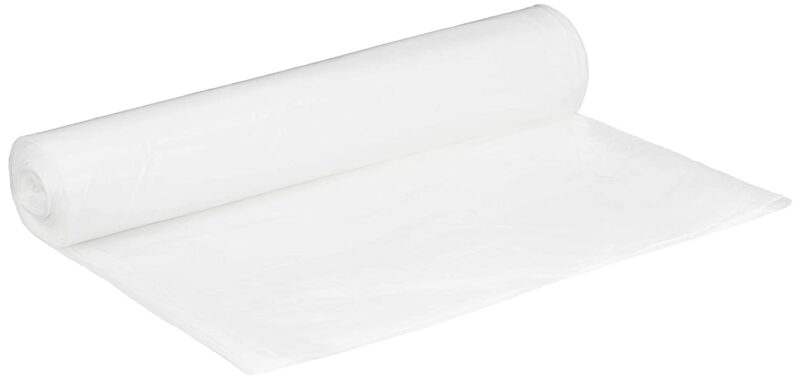

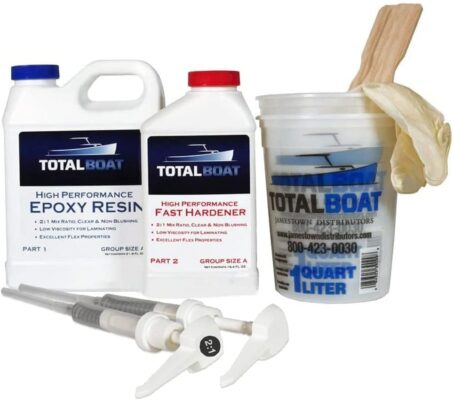
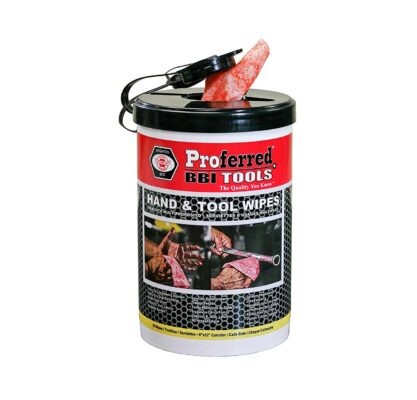
11 Responses
I really appreciate you for publishing this blog here about Epoxy Resin, it’s really a helpful and very useful for us. This is really appreciated that you have presented this data over here, I love all the information shared. Great article!
This article is incredibly detailed and helpful when it comes to understanding how epoxy resin works and how to use it in a variety of projects.
It’s great to see how much knowledge and experience you have in this field! This article is sure to be a great resource for anyone interested in learning more about epoxy resin.
I beleive I worked with epoxy resin once in my lifetime on aircraft gps antenna base plates, and the part I hated the most was it’s stickiness to hands. If you weren’t wearing gloves it was on there for weeks!
Thanks, Jeremy! I am constantly sticky. The worst is when I forget to tie my hair back! Who am I kidding? Even when I do, I have managed to dip the end of my ponytail into the epoxy while working with it, only to cut off the tip the next day after it cures!
You have a passion that is so satisfying-creating resin art of lots of stuff.
This skill is interesting to learn. I’m sure it takes a lot of practice to make these beautiful pieces.
And of course, a lot of talent, but for sure it can be honed with patience.
My niece is an artist, I will share your website with her and hopefully, she can make awesome pieces work of resin art, just like you.
Marita
Marita- Thanks so much! So glad you could stop by and thanks for sharing the site. Always appreciated.
Thank you for all of this information on your website! I was looking for a material to make a mold out of for an epoxy resin river table and now I feel super confident that I was on the correct track. This is seriously the most informative epoxy resin art site around. I appreciate artists like yourself putting in the effort to continue to perfect your craft and to make sure that other individuals succeed as well. Please continue to make posts like this one!
Cody- So happy we could help and we hope your resin table (and its mold) come out just the way you envisioned. You are why we take the time to put this information together. It does take a lot of time and it is done in my spare time, which I do not have much of, so I really appreciate it when I hear people are finding it useful. Thanks.
This is an incredibly useful post! The information on what epoxy resin sticks to and does not stick to is very valuable for anyone working with this material. The examples and explanations provided helped me understand the concept better. I also appreciate the inclusion of tips and tricks for surface preparation. Thank you for sharing your expertise, it will definitely come in handy for my next project.
So glad we could help with your next resin art project!
Many thanks for publishing such an insightful and comprehensive article on resin art. This is actually a very significant post that needs to be read. In all honesty, before this point, I was not aware of quite as much information regarding this topic. Your post provided me with a lot of useful knowledge, which I gleaned from it. In particular, the resin art supplies that you recommend are fantastic. I like the idea that they are reusable and affordable. I will also be trying to Craft Resin Epoxy resin for Jewelry. Continue to post in the same manner. I will most certainly pass this along.
Pasindu, So glad I could provide you with the information you were looking for. I love the reusable supplies as well.. and you will LOVE Craft Resin. Fantastic choice. Remember to use the links above! You will get 10% off your order of Craft Resin.